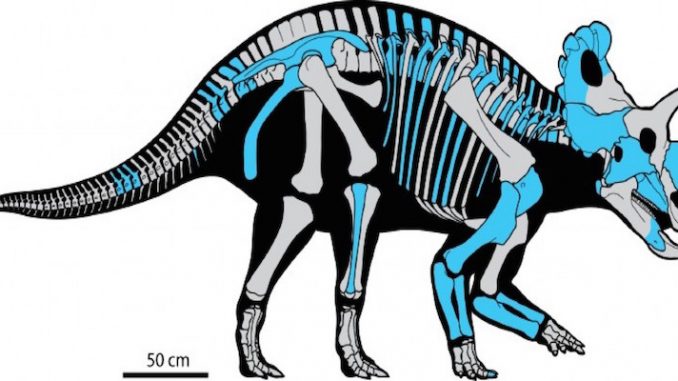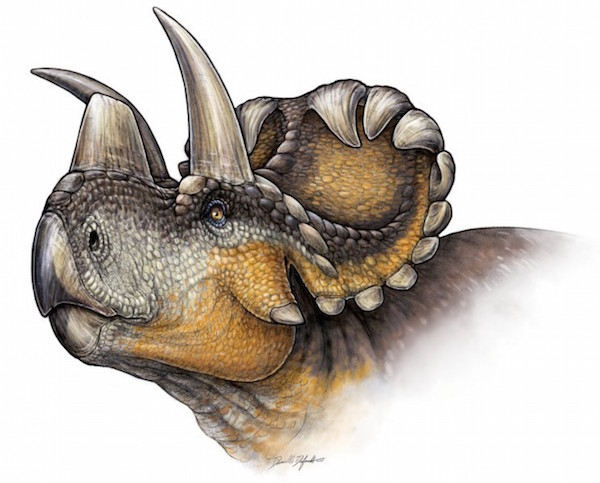
A new dinosaur species called Wendiceratops pinhornensis was discovered – and it is helping scientists to understand how the Triceratops ended up with it’s characteristic nose.
According to excerpts from The Washington Post [1]:

BYPASS THE CENSORS
Sign up to get unfiltered news delivered straight to your inbox.
You can unsubscribe any time. By subscribing you agree to our Terms of Use
Latest Video
Wendiceratops pinhornensis — named for Wendy Sloboda [2], a prolific fossil hunter who’s discovered the remains of “Wendi” and countless other important species — makes her world debut in a study published Wednesday in PLOS ONE [3].
She’s a 79 million year old Canadian (from Alberta, to be precise) which makes her one of the oldest members of the Ceratopsidae ever found [4]. And the paleontologists who put her together are very interested in her skull.
“Whether you’re looking at a triceratops or at our Wendi, all the important evolutionary details for these horned dinosaurs are in the skulls,” study co-author Michael Ryan [5], Curator of Vertebrate Paleontology at the Cleveland Museum of Natural History, told The Post. “If you just cut their heads off and looked at their bodies from the neck down, you wouldn’t be able to tell them apart.”
[F]rom the neck up, each species has its own sense of style. Their ornamentation — the horns they brandished and the hooks that frilled around their heads — seems to have evolved very quickly. Within spans of just a few million years, Ryan said, paleontologists are finding dinosaurs that stayed virtually indistinguishable from each other while sprouting strange and new headpieces.
So finding a horned dinosaur skull, Ryan explained, is always a treat. You never know what you might get. And the more variation paleontologists record, the closer they get to understanding how these features evolved.
But Wendi has one particularly interesting feature: Her nose horn.

Ryan and his colleagues can’t be sure exactly how the nose horn was shaped, because the bones of that particular feature are fragmented in the specimens they found. But they know it was more prominent and tall than any found in dinosaurs so old before. Later horned dinosaurs developed tall nose horns, and the ones found before Wendi were all rudimentary and short, or nonexistent.
“Between having nothing and having a very large horn — Wendi falls in the middle,” Ryan said. “And when you look at the tree of life for this group, this new species also falls right in the middle of it. So it makes sense that we’re looking at the ongoing evolution of a key part of the skull ornamentation.”
Ryan believes these horns and other ornaments evolved so rapidly because of sexual selection: When having a bigger horn or a more impressive frill makes you more likely to nab a mate, it means the next generation of little dinosaurs will be way more likely to have those characteristics. That effect can drive massive evolutionary changes — and the division of new species — in a fairly short time.
In the case of horned dinosaurs, Ryan said, he can imagine males butting heads the way goats do.
“They’d sort of be clashing swords, so to speak,” Ryan said.
Sources:
[2] http://www.eurekalert.org/emb_releases/2015-07/cmon-nhd070715.php
[3] http://dx.plos.org/10.1371/journal.pone.0130007


